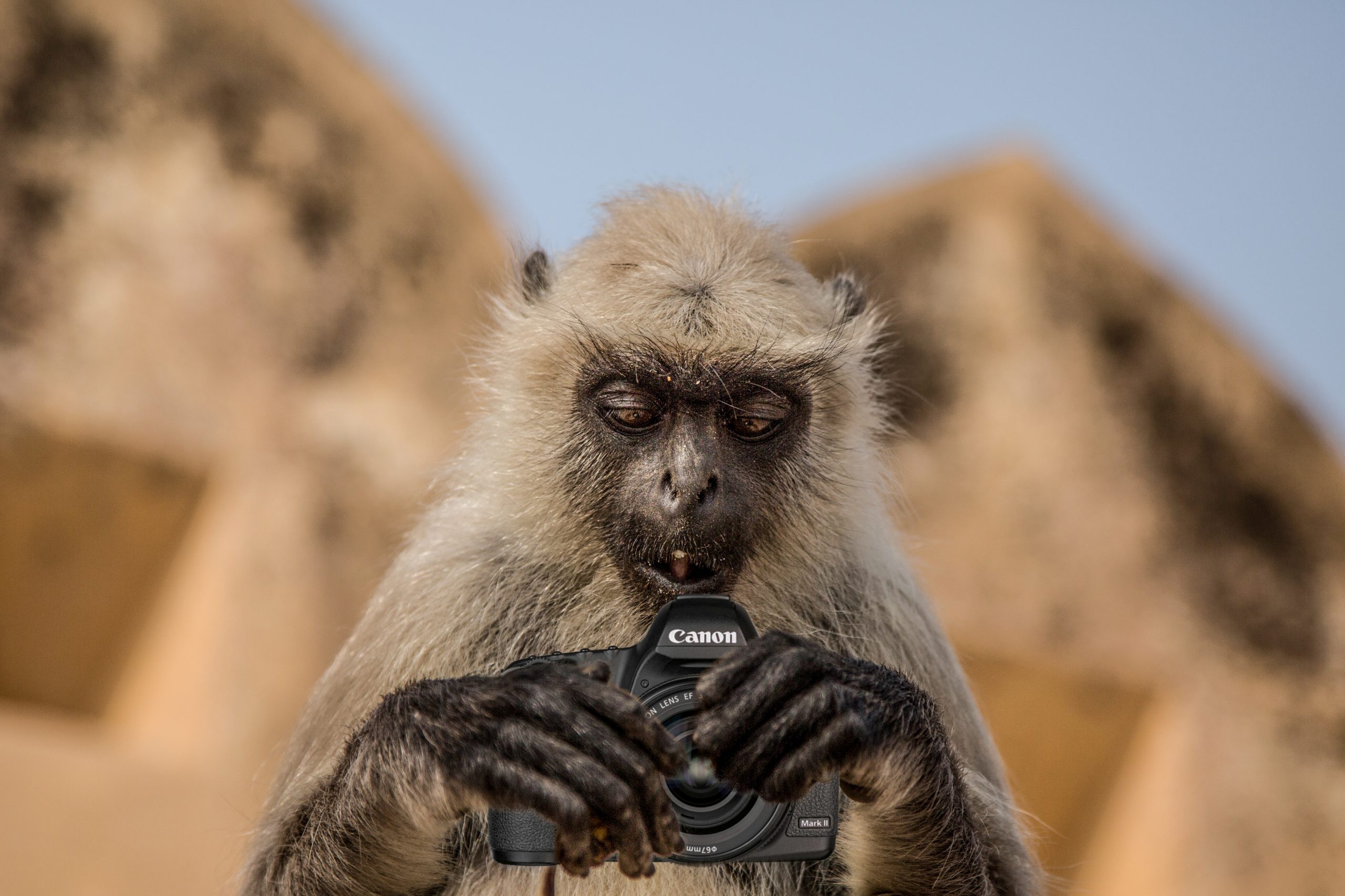
Chimping was a term that was made up shortly after the introduction of digital cameras. It’s when you see photographers take a photo then look at the back of the screen, take another shot and look and the back of the screen and keep shooting and looking and shooting and looking. This is often accompanied by “OOs” and “Ahs” and when you start to see photographers doing it over and over they resemble chimps … OO! OO! OO!
Are you guilty of this?
I don’t really have a problem with people looking like monkeys. The real issue with chimping is when it comes to portrait shoots. The act of looking at the screen and back to the model and back to the screen makes the photographer look like they don’t know what they are doing.
Gaining trust and rapport is crucial to a successful portrait shoot. Chimping in front of a model (nervous or calm) isn’t presenting you in the most confident manner.
When I started my career as a photographer, I spent the first 10 years shooting film. I had rolls of 36 exposures and needed to trust that my settings were correct and that I was getting my shot.
Today when I shoot, I check to see if the first frame is sharp and my composition looks good and then start shooting without checking the screen until I think I’ve got the shot. Now I’d be lying if I told you I never chimp because I do, but I mostly save it for times when I’m shooting lifestyle travel or landscape or advertising where positions and angles are absolutely critical to the success of a shot.
Give this a go instead
If you are a serial chimper, give this exercise a try. Next time you go out on a shoot, cover your LCD screen with black card and do the entire shoot without looking at the screen. Probably not a good idea to practise this on an important shoot. Maybe wait until you have free time and are shooting for fun.
This will train you to trust your camera, your eye and your instincts and pay attention to what’s going on in front of you.
Once you’ve successfully done that, raise the stakes by limiting the number of frames you shoot to get the shot. Trust your gut on this one. After some practise, you will just know when you’ve got the shot and stop second guessing yourself.
Both these activities will not only make you a better and faster photographer but also help you connect better with you subjects.


